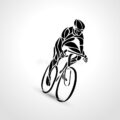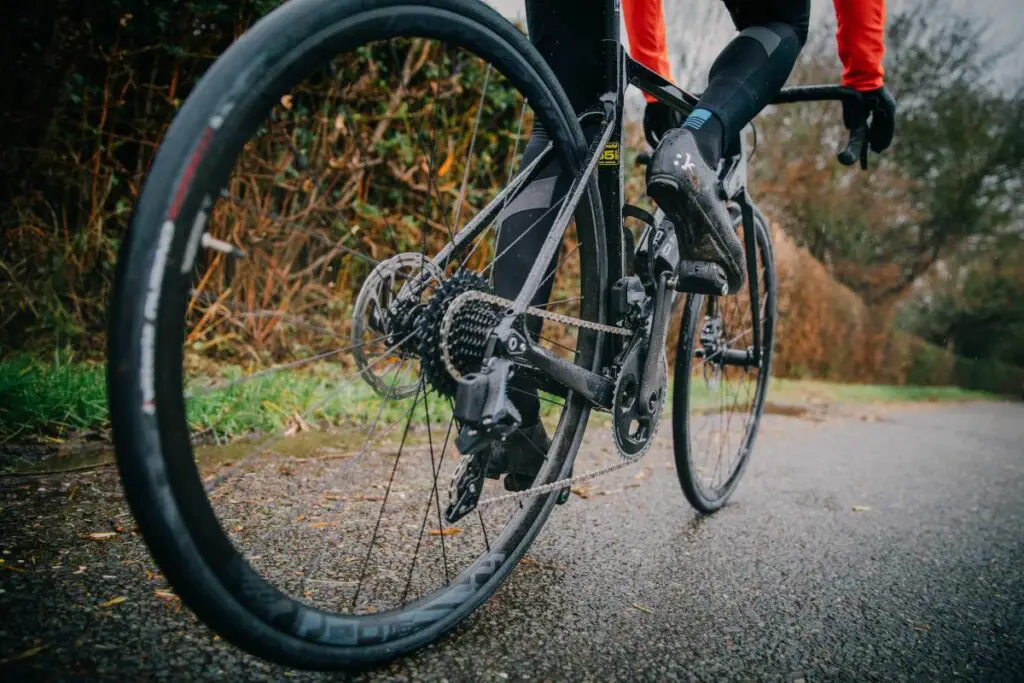How fast can a 21 speed bike go?
The highest speed that has been obtained on a 21-speed bike was 55 km/hr on a level paved road with no tailwind.
However, it is still important to note that the highest speed that can be achieved will depend on the type of road surface, the power output, the type of bike, and how fast a rider can spin.
It will often take maximum acceleration and significant endurance to attain high levels of cadence on higher gear to achieve such high speeds.
In a test I conducted to determine how fast I could go, I found I was outputting at least 500 W even though my sustainable output was no greater than 200 w. As such the 55km/hr speed is very much a sprint.
In another test with a tailwind and going downhill I managed to exceed 70 km/hr. It has to be noted that many cyclists can top this speed going downhill just rolling and streamlining while riding top quality and highly efficient bikes.
WHAT IS A 21-SPEED BIKE?
A 21-Speed bike is a bicycle that comes with 7 gears on the front sprocket and 3 gears at the front. This amazing combination of gears makes it possible for you to increase or decrease the speed easily as you ride.
This type of bike is great for both beginners and advanced riders as the high number of gears and the fact that you can ride on different terrain makes it perfect for almost anyone.
It is also a great bike for riding in competitions or difficult terrain as one can typically attain very high speeds quite easily.
HOW DOES A 21-SPEED BIKE WORK?
As a multi-speed bike, the 21-speed bike allows a rider to comfortably ride in varying terrain and at different speeds. Each speed on the bike refers to a different combination of gears. By changing to one combination or another, you can make it easier or harder to pedal the bike.
Here is how a 21-speed bike works

- Gear Set Up
The 21-speed bike comes with seven gears in the rear and three in the front sprocket. The front gear usually is installed in line with the pedals and is usually referred to as chainrings.
The gears in the rear sprocket are in line with the rear wheel axle and are called cogs individually and the cassette collectively.
The small and large chainrings are intended for extreme circumstances such as fast riding on the road or steep hills.
It is always advisable not to use the largest cogs with the large chainring or the smallest cogs in the cassette with the small chainring.
Doing so will place the chain at an extreme angle that will increase the probability of the chain jumping off the gears and will increase wear on the chain and cassette over time.
- Shifting Gears
Switching between the gears is usually accomplished using a derailleur. You will usually control the derailleur using the shifters mounted on the handlebars.
Most of the time the left shifter will control the chainrings while you will control the cassette using the right shifter. The shifters usually cause a shift by changing the position of the derailleur which causes the chain to derail from one gear to the next one.
- Choosing the Right Gear
Personal preferences usually determine the choice of gear as you are the only one that knows the most comfortable gear for your circumstances.
Nonetheless, it is always advisable to start with a medium cog in the cassette*usually number four on the 21-speed bike( paired with the middle chainring.
You can then make small adjustments to the cassette using the left shifter. To increase your cadence you should go for smaller cogs such as numbers seven, six, and five. To find a slower cadence use larger gears such as three, two, and one.
If you find the number seven or number one gear is not slow or fast enough for you adjust the chainring and move the cassette to number four.
ADVANTAGES OF A 21-SPEED BIKE OVER A 7 SPEED
Most people usually settle on either the 21-speed or 7-speed bike. However, the bike for you will depend on a range of factors including the riding style you prefer.
The 21-speed bike is overall faster with smoother pedaling and transitions. The 7-speed bike is typically adequate for most cyclists even if it tends to be slower.
Since the 7-speed has a less complicated build and fewer gears, it tends to be cheaper than the 21-speed. Still, it is important to take into account your riding style before deciding on the cheaper model.
The 7-speed bike is suitable for shorter rides and rough terrain as its rugged build can take the abuse as compared to the 21 speed which is better suited for morning commutes or riding fast through the city.

HOW TO RIDE A 21-SPEED BIKE
Once you learn and master the gearing of a 21-speed bike you will be able to ride faster and go on longer rides without getting too tired.
- Understanding Gear Setup
The front chainring of a 21-speed comes with three rings and is typically controlled by the left handlebar shifter. When you are riding on descents and flats, you should have the chain on the biggest ring.
When you are riding on moderate hills or into headwinds the medium ring is usually your best bet. The smallest ring is usually best when you are tackling tough ascents and very strong headwinds.
The rear cassette usually comes with seven gears that you will typically control with the right handlebar shifter. The largest rear gear is usually the easiest and the smallest is the hardest.
- How to Shift Gears
It is always recommended that you continuously pedal as you shift to prevent the chain from falling off or jumping gears.
For the biggest adjustments, you should shift the front chainring first and use the rear gear to fine-tune adjustments and any resistance.
You should avoid riding with the chain on the biggest rear gear and chainring and vice versa. Doing so may result in unnecessary wear of the derailleur and chain stretch, in addition to grinding and annoying sounds.
- Planning Ahead

Cyclists typically make some common mistakes when riding geared bikes, the most common of which is not anticipating gear changes. It is always important to look ahead for descents and ascents and plan any gear changes you may need.
It is always easier to shift into an easier gear before you start a difficult ascent as trying to do so while already on the ascent may be tricky in addition to being tough on the drivetrain.
The second mistake riders make is not getting into easier gears when coming to a stop. If you have a tailwind or are cruising on flats, you could be in hard gear.
This is awesome until you stop and try to resume the ride which will be so much more difficult in such gear. It is always recommended to shift down the gears to an easier gear when coming to a stop to make resuming your ride easier.
5. Making Good Use of the Gears
Bikes are designed with different gears so that you can maintain a steady cadence regardless of leg fatigue, wind, or terrain that you are riding on. If you can maintain a steady cadence of between 80 and 90 rpm you will significantly increase your stamina and endurance.
To make good use of your gears, you should always shift into easier gears when your legs are getting tired or when you are approaching an ascent. If at any point your cadence begins to fall, this is a signal that you need to switch to an easier gear.
Conversely, you should shift into harder gears on descents and when you have a tailwind. This will make it easier to maintain or increase your speed at the same exertion level or cadence.


